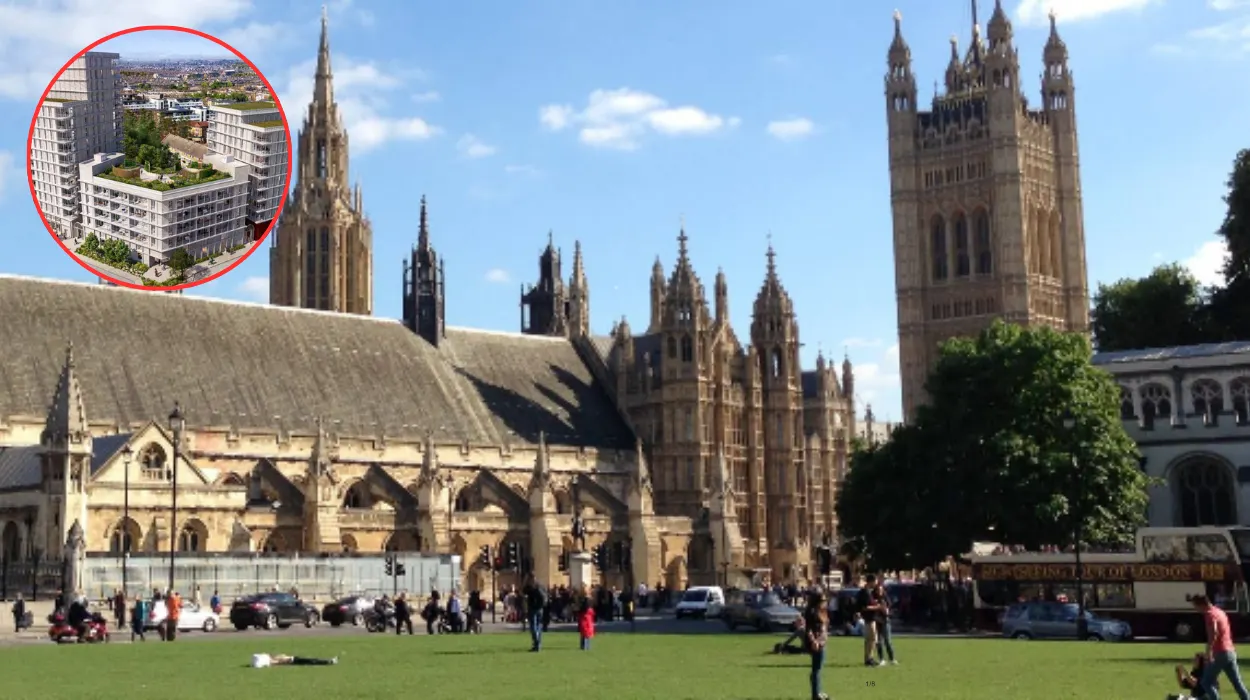City of Westminster (Parliament Politics Magazine) – A City of Westminster site may soon be demolished to develop 144 new homes and adult social care housing, aligning with local regeneration and housing goals.
Westminster City Council has submitted an application to transform 291 Harrow Road and 1-2 Elmfield Way into a “model residential-led mixed-use development” that will include both “state-of-the-art” adult social care facilities and a variety of reasonably priced, market-rate apartments.
The council’s Planning Committee is considering a plan that would increase the number of adult social care facilities on the property from the five that are already there to twenty-four. In addition, there are 72 market-rate units and 48 affordable dwellings.
According to the proposal, the council intends to develop these apartments in three distinct buildings with a combined height of five to fifteen stories, as well as a commercial area and indoor sports complex.
Architects Carter Gregson Gray said the redevelopment
“provides a significant opportunity for community regeneration and place making in the borough, and to create much needed high-quality homes for an ever growing population”.
They added:
“The brief also includes the delivery of a new state-of-the-art adult social care building to replace the existing provision on the site.”
There will be some parking available for adult social care users, but the development will not allow cars.
The plans, according to critics, amount to a “overdevelopment” of residential land and could cause nearby residences to lose daylight. They claimed that Westminster City Council had not adequately consulted them and that the towering structures would have a “wind tunnelling impact.”
Concerns regarding the effect on the local medical center’s upcoming renovation were also expressed by them.
According to Westminster City, there are no plans to renovate the medical practice on Woodfield Road. The development would have “relationships to neighbouring properties seen elsewhere in the Carlton Gate development and Westminster,” while being tall and heavy, according to the report.
They wrote:
“While these percentage losses to daylight and sunlight are significant and will be noticeable to neighbouring residents, this is acceptable in this urban context.
Officers consider that the design, siting and orientation of the buildings, which has responded to good urban design, has sought to break up the mass as far as reasonably practicable, to limit the harm to neighbouring property.”
According to them, the project provides several “very substantial” public advantages, including a new community area, a roof garden, bike parking, and a state-of-the-art sports complex.
Additionally, there will be more reasonably priced adult social care facilities. Building A will have 72 market-rate residential units spread across 15 stories and 46 meters in height.
Building B would be 18 meters high, five stories high, and house 24 adult social care apartments with a roof garden that is solely available to residents. Building C will be 10 stories tall and 34 meters high, with 48 residential units available for “intermediate” and social rent.
The majority (53%) of the development is made up of the 75 two-bedroom residences that are part of the project. Additionally, plans call for 42 one-bedroom apartments (29 pieces) and 26 three-bedroom apartments (18 pieces).
There are currently five adult social care apartments on the property, together with an outdoor playground. A large portion of the proposed redevelopment site is owned by Westminster City Council.
On Tuesday, July 8, the application will be reviewed by the Westminster Planning Committee.
What are the plans for demolishing the Westminster site to build new homes?
In order to make room for a new plan that would deliver over 1,100 new houses, at least 50% of which will be affordable housing, Westminster City Council proposes a significant redevelopment that will involve the complete demolition of the Church Street estate, one of its largest housing estates. The first phase of this almost £600 million rehabilitation project will see the construction of 428 new residences in towers that range in height from eight to fourteen stories.
The council has defended the demolition by arguing that the size of the new dwellings being proposed and the requirement to fulfill modern standards make it impractical to modify the existing buildings. To lessen their influence on the environment, contractors try to recycle components from existing constructions, such as foundations.


